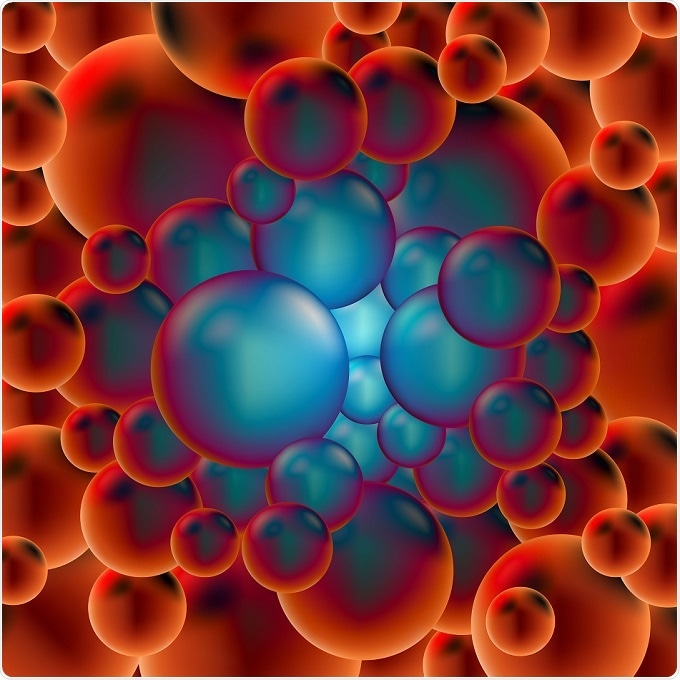An interview with Dr. Alexander Dulebo, Bio Application Engineer at Bruker Nano Surfaces Division conducted by April Cashin-Garbutt, MA (Cantab)
What are the potential life science applications of AFM?
AFM is quite a versatile technique and we see a great potential of this technology for life science applications. It is still fairly new in Bio community, however very well accepted not only as imaging tools but as a versatile instrument for nanomechanical measurements.
 © katason/Shutterstock.com
© katason/Shutterstock.com
AFM could be used to map ligand-receptor interactions also on top of living cells. Recent advances in AFM imaging speed, enables to observe samples dynamics, and see, for example, how cells are moving; how molecules interact and so on.
Can you please give an overview of the BioScope Resolve?
The BioScope Resolve is Bruker’s latest BioAFM and it is designed to operate with biological samples in their native environment. It was designed to maintain fully physiological conditions, such as the temperature, gas level and pH, keeping samples viable for longer time.
The BioScope Resolve AFM was specifically constructed to be combined with an inverted optical microscope, so users can benefit from both modalities at the same time. And it doesn't matter whether it is a regular phase contrast or a fluorescent or confocal system, all data can be combined and visualized on one screen for users’ convenience.
What impact will AFM have on biological research?
At the moment, we see a great potential for AFM to be used by biologists and even people coming from medicine, moving from more regular users, such as physicists or chemists. Using the BioAFM has never been so easy, and doesn’t require any specific skills and extensive training. The unique information AFM can provide could be hardly, if possible, acquired by other instruments.
The BioScope Resolve AFM makes it easier to look, map and measure all those quantities like sub-molecular resolution on isolated molecules, mechanical properties of living cells and tissues, adhesion forces between cells and molecules. It is also fast enough to visualize dynamics and behaviour of native unlabelled molecules and cells, which is quite fascinating and cannot be observed using other techniques.
We receive lots of requests from biologists all over Europe, from institutes and clinics, to discuss how our novel AFM technologies could be applied to all sorts of biological samples including living cells, tissues and biopsies. Perhaps one day we will see presence of Atomic Force Microscopes directly in hospitals, for a quick and reliable diagnostic which eventually saves people’s lives.
How has the new MIROView™ interface helped user access and interoperate the data sets they collect?
Bruker’s MIROView™, is a new graphical user interface designed to support seamless integration of the AFM and inverted optical microscope data. It allows to automatically import, rescale light microscope images, which can be used to direct location of AFM imaging and force measurements. After, correlated datasets can be captured and analyzed with Nanoscope Analysis software provided to every user. Never before optical and AFM integration was so smooth, accurate and easy to use.
How have you achieved the highest resolution imaging of any BioAFM on the market?
The BioScope Resolve has lots of improvements in the hardware, so the noise lever on both XY and Z is significantly decreased. This provides us with an ultimate imaging resolution enabling to visualize DNA double helix and bacteriorhodopsin monomers even when the AFM is mounted on inverted optical microscope. We have also improved our Peak Force Tapping technology, which together with the new probes and novel background removal algorithm enables us to operate with even smaller forces.
Bruker BioScope Resolve: An AFM Made for Biological Research
Bruker BioScope Resolve: An AFM Made for Biological Research from AZoNetwork on Vimeo.
How does this compare to other high-resolution imaging AFM systems?
The BioScope Resolve is unique in the number of features and capabilities it holds. Without doubts this is our most advanced AFM in terms of flexibility and ease of use, advance nanomechanical characterization, speed of scanning, and of curse unbeatable high-resolution it delivers also in the combination with inverted optical microscopes.
Do you have any examples that demonstrate the BioScope Resolve’s superior performance in this area?
We constantly challenge our BioScope Resolve with a great number of various samples and applications coming from our users. Various examples on molecular, bacterial, and cellular samples could be easily found on Bruker web site. Our latest’s challenges were to demonstrate one frame per second imaging rate on a fragile DNA mini circles and both imaging and mechanical mapping of large cellular populations of up to 500 by 500 microns in size in a fully automated way. All these challenges were successfully accomplished and data examples are available.
Where can readers find more information?
For more information on AFM from Bruker: https://www.bruker.com/products/surface-and-dimensional-analysis/atomic-force-microscopes.html
About Dr. Alexander Dulebo
 Alexander Dulebo is a Bio Application Engineer at Bruker Nano Surfaces Division. He is responsible in supporting European and Latin American customers, as well as establishing and maintaining close collaboration between Bruker and BioAFM community.
Alexander Dulebo is a Bio Application Engineer at Bruker Nano Surfaces Division. He is responsible in supporting European and Latin American customers, as well as establishing and maintaining close collaboration between Bruker and BioAFM community.
He also dedicates his time to development and testing new hardware and software features to improve BioAFMs functionality and ease of use. Alexander holds a PhD in Biophysics and has more than 10 years of AFM experience working mainly with biological samples in the area of imaging and ligand-receptor mapping.